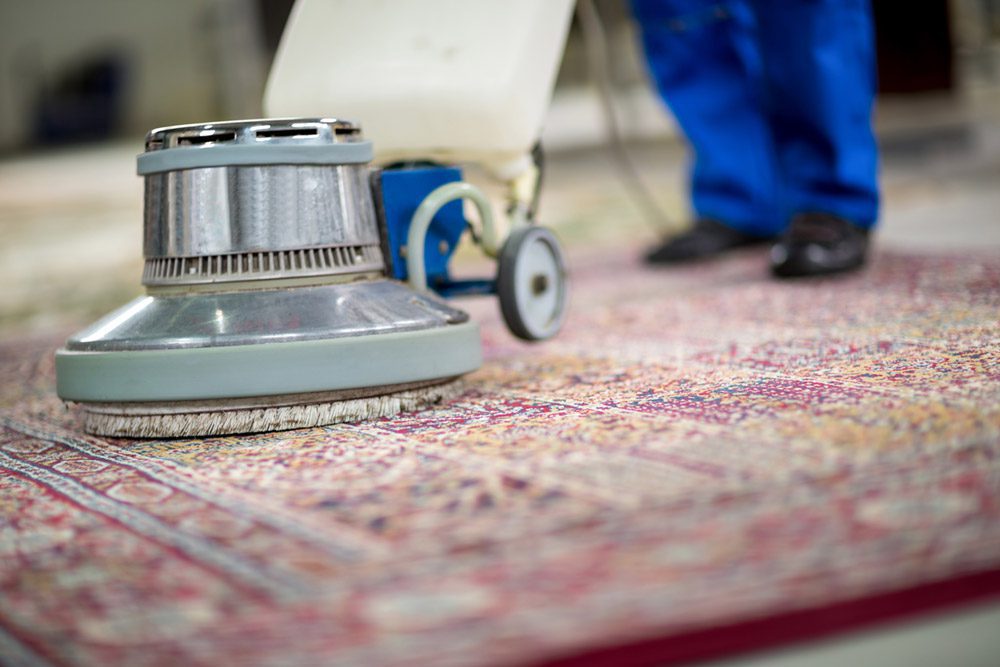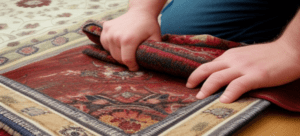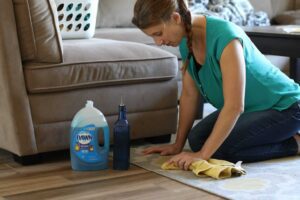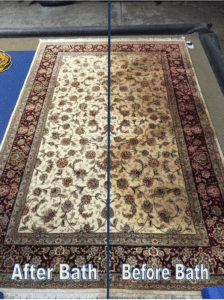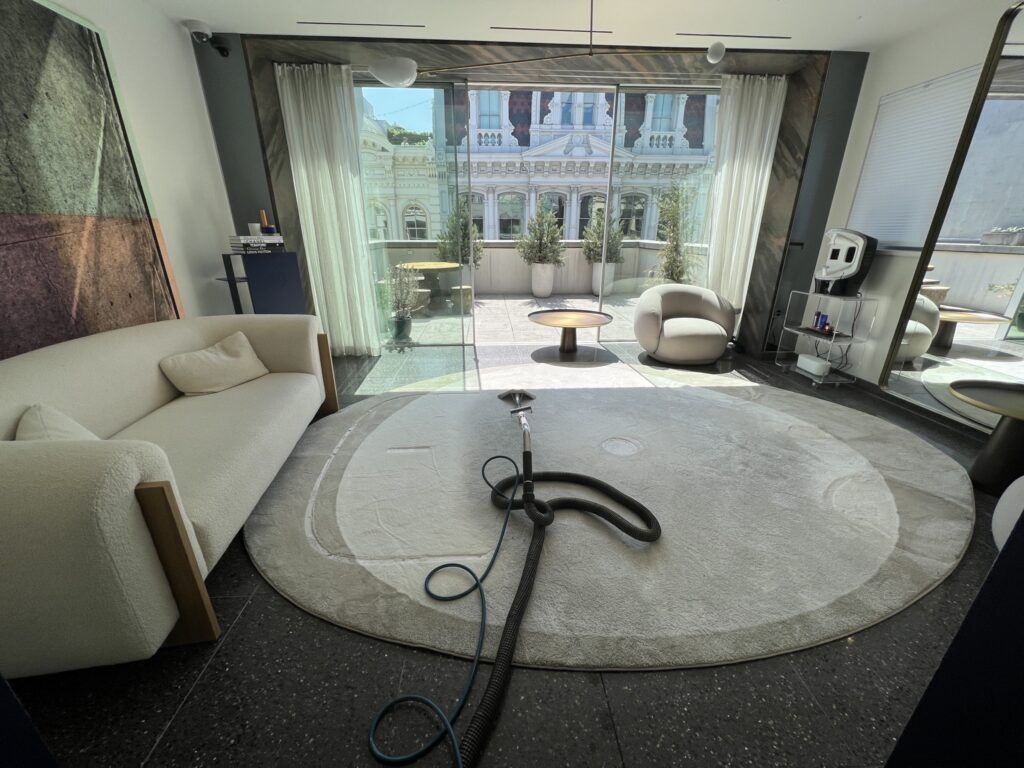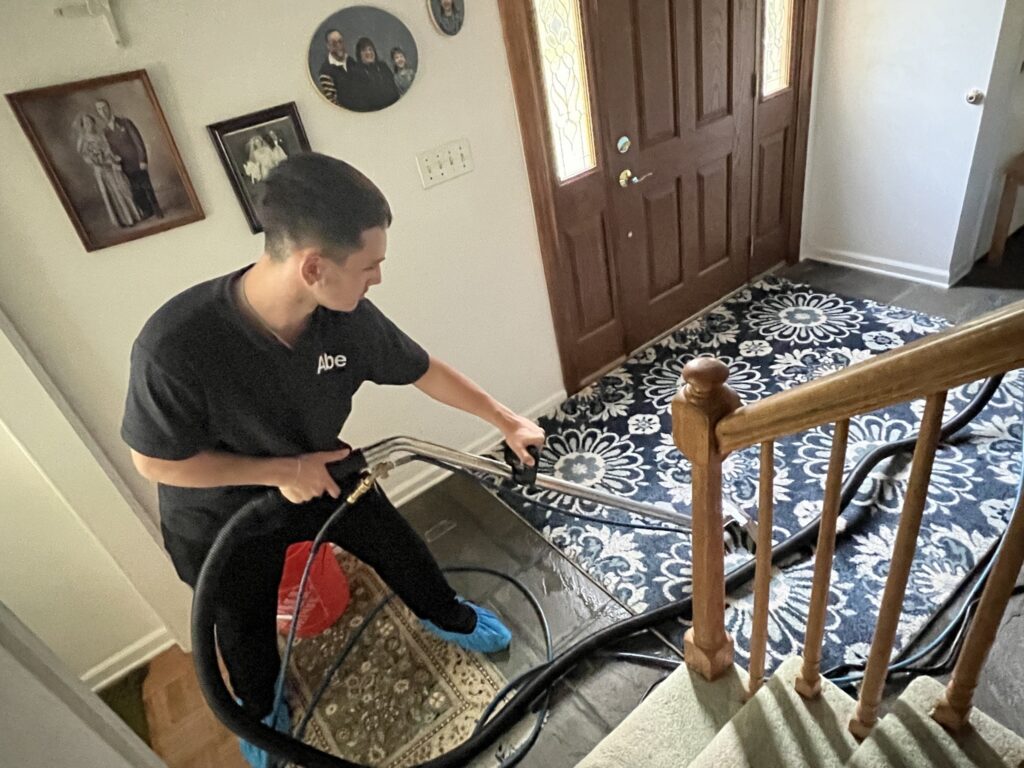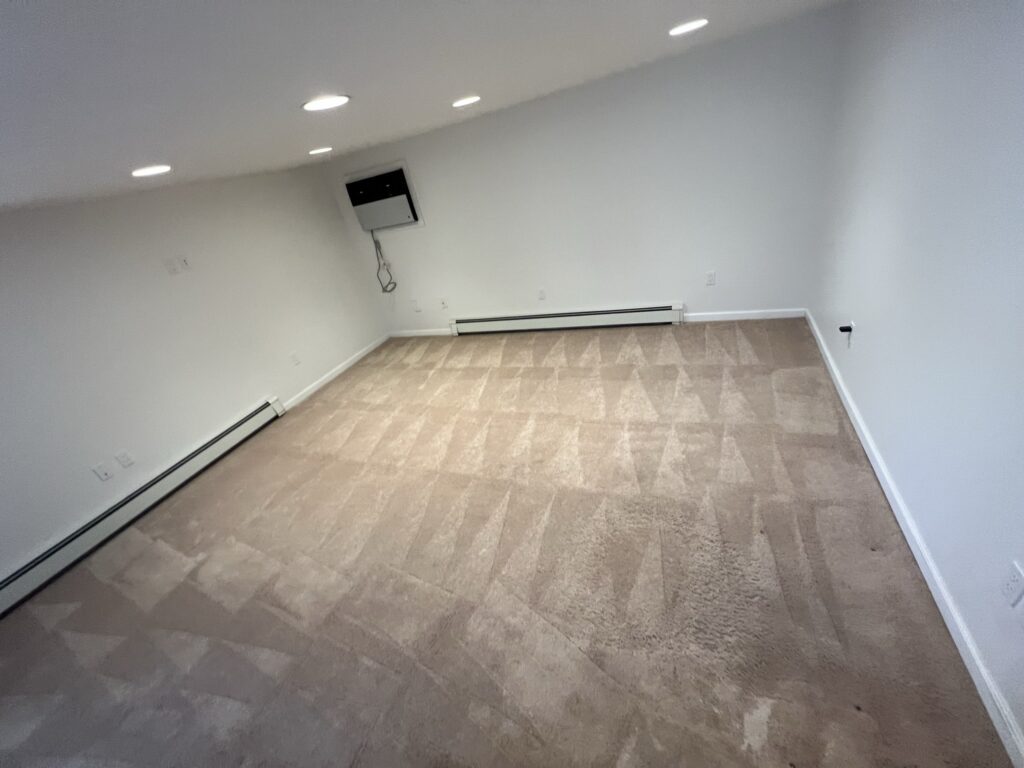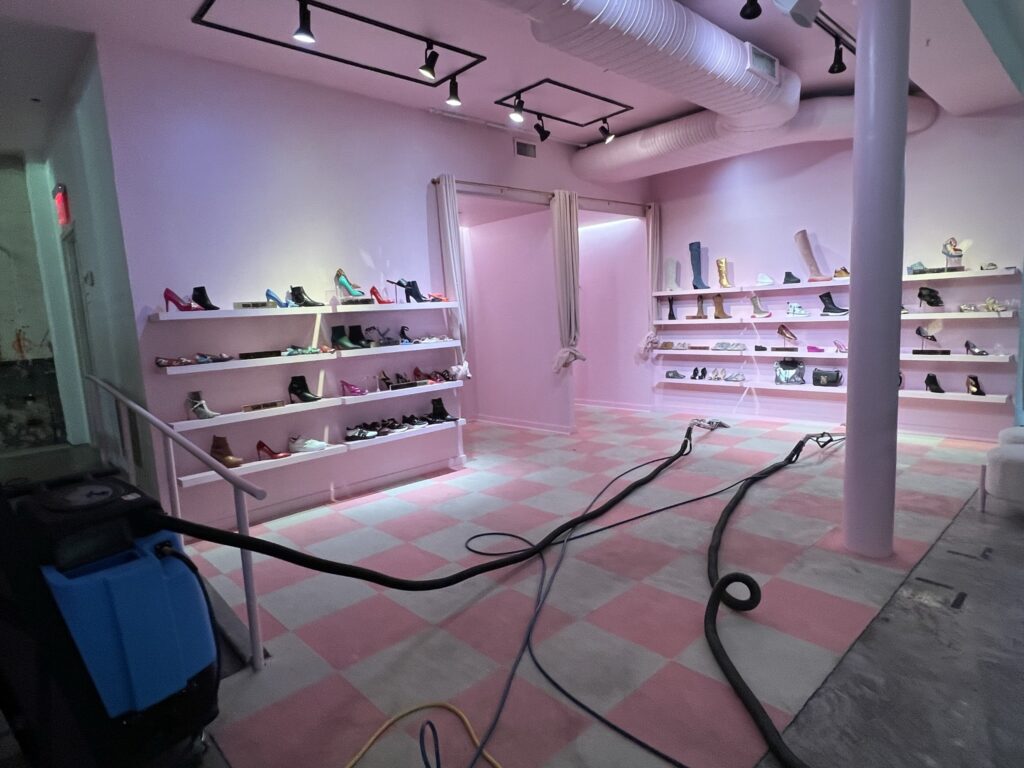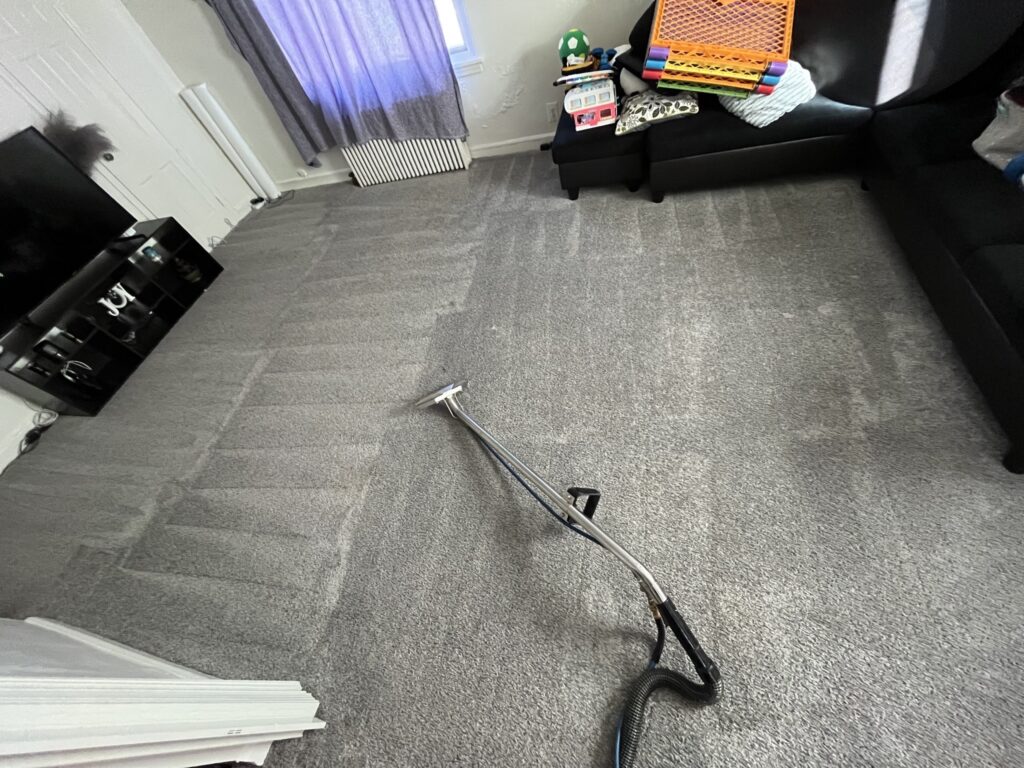Keep your rug looking and smelling fresh by incorporating regular vacuuming into your cleaning routine. Vacuuming not only helps to remove surface dirt and debris, but it also helps to prevent dirt from settling deep into the rug fibers. Whether you have a plush shag rug or a low-pile rug, regular vacuuming can help maintain its appearance and extend its lifespan.
By vacuuming your rug at least once a week, you can effectively remove dust, pet dander, and allergens that can accumulate over time. Make sure to use the appropriate setting on your vacuum cleaner to avoid damaging the rug, especially if it is a delicate or antique piece.
Incorporating regular vacuuming into your cleaning routine is a simple and effective way to keep your rug clean and looking its best. So grab your vacuum cleaner and give your rug the attention it deserves.
The Importance of Regular Vacuuming for Rug Maintenance
Regular vacuuming plays a crucial role in the maintenance of your rug. As you walk on your rug, dirt, dust, and debris get trapped in the fibers, causing them to become flat and dull over time. Vacuuming helps to remove these surface particles and prevent them from settling deeper into the rug.
Furthermore, regular vacuuming can help to prevent the buildup of allergens such as dust mites, pet dander, and pollen. These particles can trigger allergies and respiratory issues, especially for individuals who are sensitive to them. By removing these allergens through vacuuming, you can create a healthier living environment.
To effectively remove dirt and allergens, it is important to choose a vacuum cleaner with strong suction power and appropriate attachments for rugs. High-quality vacuums can efficiently lift dirt and debris from the rug fibers, ensuring a thorough cleaning.
How Often Should You Vacuum Your Rug?
The frequency of vacuuming your rug depends on several factors, including the amount of foot traffic it receives and whether you have pets or allergy sufferers in your home. As a general rule, it is recommended to vacuum your rug at least once a week.
For high-traffic areas or rugs that are prone to collecting more dirt and debris, such as entryways or living rooms, more frequent vacuuming may be necessary. On the other hand, rugs in less frequently used areas, such as bedrooms, may require vacuuming every two weeks.
In addition to regular vacuuming, it is also beneficial to vacuum your rug before deep cleaning or applying any rug freshening methods. This helps to remove loose dirt and debris, allowing for a more effective cleaning process.
Types of Vacuums for Rug Cleaning
When it comes to vacuuming rugs, not all vacuum cleaners are created equal. Different types of rugs require different types of vacuums to ensure proper cleaning without causing damage. Here are some of the most common types of vacuums for rug cleaning:
- Upright Vacuums: Upright vacuums are a popular choice for rug cleaning due to their powerful suction and versatility. They are designed to stand upright and feature a rotating brush roll that helps to agitate and lift dirt from the rug fibers.
- Canister Vacuums: Canister vacuums are another excellent option for rug cleaning, especially if you have delicate or antique rugs. They consist of a separate canister and a long hose, allowing for more maneuverability and precise cleaning. Canister vacuums are particularly effective in reaching tight spaces and stairs.
- Stick Vacuums: Stick vacuums are lightweight and portable, making them convenient for quick and everyday rug maintenance. While they may not have the same suction power as upright or canister vacuums, stick vacuums are ideal for low-pile rugs or rugs in small areas.
- Robot Vacuums: Robot vacuums have gained popularity in recent years for their convenience and automation. These intelligent devices can navigate around your rug and automatically clean it on a scheduled basis. While they may not provide as deep of a clean as manual vacuuming, they are a great option for regular maintenance.
When choosing a vacuum cleaner for your rug, consider factors such as the type of rug you have, the features of the vacuum, and your specific cleaning needs. It is also important to regularly clean or replace the vacuum’s filters to maintain optimal performance.
Proper Technique for Vacuuming Rugs
Vacuuming your rug correctly is essential to maximize its cleaning effectiveness and prevent any potential damage. Here are some tips for proper rug vacuuming technique:
- Adjust the Height: Most vacuum cleaners have adjustable height settings. Set the height to the appropriate level for your rug to ensure the vacuum’s brush roll can effectively reach the fibers without causing excessive friction. For rugs with delicate fibers, such as silk or antique rugs, it is best to turn off the brush roll or use a vacuum without a rotating brush.
- Remove Small Objects: Before vacuuming, remove any small objects or loose threads from the rug’s surface. These objects can get tangled in the vacuum cleaner’s brush roll and cause it to malfunction or damage the rug.
- Vacuum in Different Directions: To thoroughly clean your rug, vacuum in different directions. Start by vacuuming horizontally, then vertically, and finish with diagonal passes. This technique helps to loosen dirt and debris from all angles.
- Pay Attention to Edges and Corners: Use the appropriate attachments, such as a crevice tool or an upholstery brush, to clean the edges and corners of your rug. These areas often accumulate more dirt and require extra attention.
- Slow and Steady: Avoid rushing through the vacuuming process. Slow and steady passes allow the vacuum cleaner to effectively lift dirt and debris without scattering them back onto the rug. Take your time to ensure a thorough cleaning.
Remember to empty or replace the vacuum cleaner’s bag or canister regularly to maintain optimal suction power. Additionally, clean the vacuum cleaner’s brush roll and filters as recommended by the manufacturer to prevent clogs and maintain performance.
Common Mistakes to Avoid When Vacuuming Rugs
While vacuuming is a simple task, there are some common mistakes that people make when cleaning their rugs. Avoiding these mistakes can help prolong the life of your rug and ensure effective cleaning. Here are some mistakes to avoid:
- Using the Wrong Vacuum Setting: Using the wrong vacuum setting can lead to ineffective cleaning or even damage to your rug. For example, using a high-pile setting on a low-pile rug can cause the vacuum to pull and unravel the rug fibers. Always use the appropriate setting for your rug type.
- Neglecting the Back of the Rug: Don’t forget to vacuum the back of your rug as well. The back can accumulate dirt and dust, which can eventually transfer to the front of the rug. Flip the rug over and vacuum the backside to remove any trapped particles.
- Rushing the Vacuuming Process: Vacuuming too quickly or making hurried passes can result in ineffective cleaning. Take your time and make deliberate, slow passes to ensure thorough cleaning and efficient dirt removal.
- Overlooking the Rug’s Fringe: If your rug has fringe, pay special attention to it during vacuuming. Fringes can easily get tangled in the vacuum cleaner’s brush roll or be pulled loose. Gently lift the fringe away from the vacuum’s path or use an attachment to clean it separately.
- Neglecting Regular Maintenance: Regular maintenance of your vacuum cleaner is crucial for optimal performance. Neglecting to clean or replace filters, empty the bag or canister, or maintain the brush roll can result in reduced suction power and ineffective cleaning.
By avoiding these common mistakes, you can ensure that your rug receives the best care during the vacuuming process.
Additional Tips for Keeping Your Rug Fresh
In addition to regular vacuuming, there are some additional tips you can incorporate into your rug maintenance routine to keep your rug fresh and looking its best:
- Spot Cleaning: Address spills and stains promptly to prevent them from setting into the rug fibers. Blot the affected area with a clean cloth or paper towel to absorb as much liquid as possible. Avoid rubbing the stain, as it can push it deeper into the rug. If needed, use a mild detergent or a specialized rug cleaner to treat the stain.
- Rotate Your Rug: To ensure even wear and prevent certain areas of the rug from fading or flattening, rotate it every few months. This helps distribute foot traffic and sunlight exposure across the entire rug.
- Protect from Sunlight: Direct sunlight can cause the colors of your rug to fade over time. If your rug is exposed to sunlight, consider using window treatments or UV-blocking film to protect it. Alternatively, you can rotate the rug periodically to minimize sun damage.
- Use Rug Pads: Rug pads provide cushioning, prevent slipping, and protect your rug and floors from damage. They also help to extend the lifespan of your rug by reducing friction between the rug and the floor.
- Professional Rug Cleaning: While regular vacuuming is important, it is also beneficial to have your rug professionally cleaned periodically. Professional rug cleaning services have specialized equipment and expertise to deep clean and rejuvenate your rug, removing embedded dirt and stains.
Natural and DIY Rug Freshening Methods
If you prefer to use natural or DIY methods to freshen your rug, there are several options available. Here are a few ideas:
- Baking Soda: Sprinkling baking soda on your rug and letting it sit for a few hours can help absorb odors. Vacuum the baking soda thoroughly to remove it along with any trapped odors.
- Essential Oils: Add a few drops of your favorite essential oil to a small spray bottle filled with water. Lightly mist your rug to give it a pleasant scent. Be sure to test the essential oil on a small, inconspicuous area of the rug first to ensure it doesn’t cause any discoloration.
- Vinegar Solution: Mix equal parts white vinegar and water in a spray bottle. Spray the solution onto the rug and let it sit for a few minutes. Blot the area with a clean cloth to remove any stains or odors. Vinegar is effective in neutralizing odors and removing certain stains.
- Cornstarch: Sprinkling cornstarch on your rug and letting it sit for about 30 minutes can help absorb excess moisture and oils. Vacuum the cornstarch thoroughly to remove it along with any trapped particles.
Remember to always test any DIY method on a small, inconspicuous area of the rug first to ensure it doesn’t cause any damage or discoloration. If in doubt, consult a professional rug cleaner for advice.
Rug Maintenance Beyond Vacuuming
While regular vacuuming is crucial for rug maintenance, there are some additional steps you can take to keep your rug in top condition:
- Regularly Shake or Beat the Rug: If your rug is small enough, take it outside and give it a good shake or beat it with a rug beater. This helps to dislodge loose dirt and debris that may not be effectively removed through vacuuming alone.
- Avoid Heavy Furniture Placement: Placing heavy furniture directly on your rug can cause indentations and permanent damage. Use furniture pads or coasters to distribute the weight and protect the rug.
- Trim Loose Threads: If you notice any loose threads on your rug, trim them carefully with scissors to prevent them from unraveling further. Be cautious not to cut any of the rug’s fibers.
- Store Properly: If you need to store your rug for an extended period, make sure it is clean and completely dry. Roll it up with the pile side facing inward to protect the rug’s surface. Avoid storing it in damp or humid areas, as this can promote mold or mildew growth.
By incorporating these additional rug maintenance practices into your routine, you can prolong the life of your rug and keep it looking fresh and vibrant.
Conclusion: The Key to a Fresh and Clean Rug
Regular vacuuming is essential for keeping your rug fresh, clean, and looking its best. By removing surface dirt, dust, and allergens, you can maintain the appearance and extend the lifespan of your rug. Remember to choose the appropriate vacuum cleaner for your rug type, use the correct settings, and vacuum in different directions for thorough cleaning.
Avoid common vacuuming mistakes, such as using the wrong setting or neglecting the rug’s fringe. Incorporate additional rug maintenance practices, such as spot cleaning, rotating the rug, and using rug pads, to further enhance its longevity.
If you prefer natural or DIY methods, baking soda, essential oils, vinegar solutions, and cornstarch can be used to freshen your rug. However, always test these methods on a small area first to ensure they are safe for your rug.
Lastly, consider professional rug cleaning services to deep clean and rejuvenate your rug periodically. These services can help remove embedded dirt and stains, reviving your rug’s appearance.
By following these tips and making regular vacuuming a part of your cleaning routine, you can ensure that your rug remains fresh, clean, and a beautiful addition to your home for years to come. So grab your vacuum cleaner and give your rug the attention it deserves!

